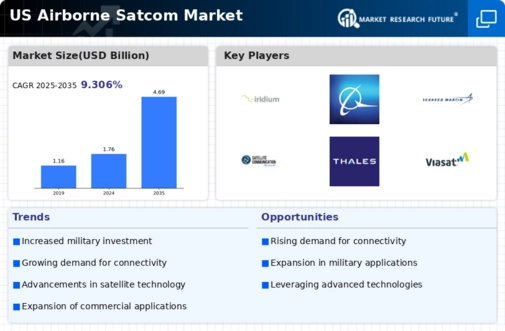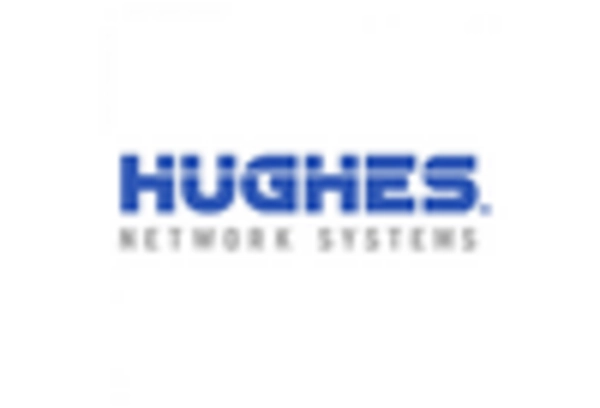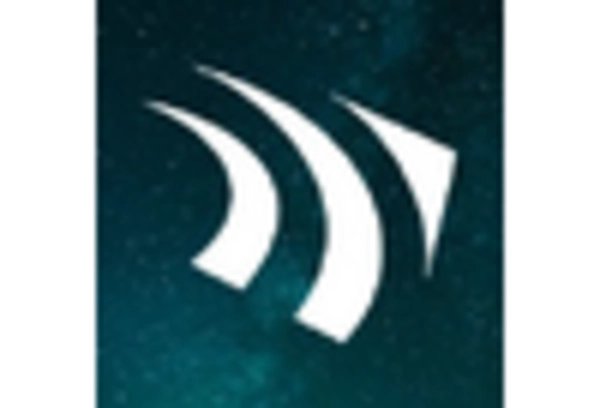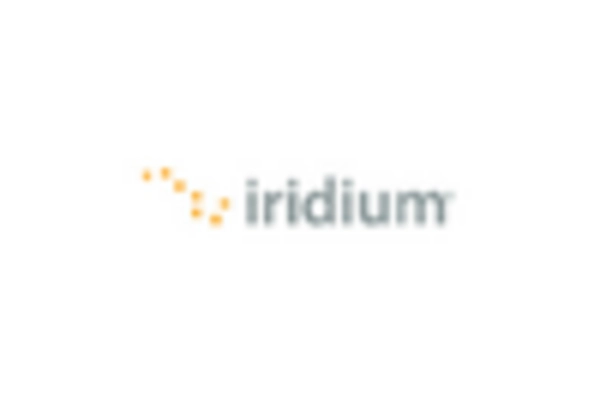Growing Military Applications
The airborne satcom market is experiencing a surge in demand due to the increasing military applications of satellite communication systems. The U.S. Department of Defense has been investing heavily in advanced communication technologies to enhance operational capabilities. This investment is projected to reach approximately $20 billion by 2026, reflecting a compound annual growth rate (CAGR) of around 5%. The need for secure and reliable communication channels in military operations drives the adoption of airborne satcom solutions. Furthermore, the integration of these systems into unmanned aerial vehicles (UAVs) and other military platforms is likely to bolster market growth. As military operations become more complex, the reliance on airborne satcom for real-time data transmission and situational awareness is expected to increase, thereby solidifying its role in the airborne satcom market.
Expansion of Commercial Aviation
The expansion of the commercial aviation sector significantly influences the airborne satcom market. With the U.S. commercial aviation industry projected to grow at a CAGR of 4% through 2027, the demand for in-flight connectivity solutions is on the rise. Airlines are increasingly adopting airborne satcom systems to enhance passenger experience and operational efficiency. The integration of high-speed internet and entertainment services is becoming a standard expectation among travelers. As a result, airlines are investing in satellite communication technologies to meet these demands. The market for airborne satcom in commercial aviation is anticipated to reach $5 billion by 2025, driven by the need for seamless connectivity and improved operational capabilities. This trend indicates a robust growth trajectory for the airborne satcom market, as airlines seek to differentiate themselves in a competitive landscape.
Increased Focus on Safety and Security
The airborne satcom market is also driven by an increased focus on safety and security in aviation. Regulatory bodies in the U.S. are emphasizing the need for robust communication systems to ensure passenger safety and operational integrity. The Federal Aviation Administration (FAA) has been advocating for the implementation of advanced communication technologies to enhance situational awareness and emergency response capabilities. This regulatory push is likely to result in increased investments in airborne satcom systems, as airlines and operators seek to comply with safety standards. The market for safety-related airborne satcom solutions is projected to grow by 6% annually, reflecting the industry's commitment to enhancing safety measures. This trend underscores the critical role of airborne satcom in maintaining high safety standards within the aviation sector.
Rising Demand for Data-Driven Services
The rising demand for data-driven services is significantly impacting the airborne satcom market. As airlines and operators seek to leverage data analytics for operational efficiency, the need for reliable satellite communication systems becomes paramount. The U.S. aviation industry is increasingly adopting data-driven approaches to optimize flight operations, enhance maintenance practices, and improve customer service. This trend is expected to drive the market for airborne satcom solutions, with a projected growth rate of 5% through 2026. The integration of real-time data analytics with airborne satcom systems allows for better decision-making and resource allocation. Consequently, the airborne satcom market is likely to expand as stakeholders recognize the value of data-driven insights in enhancing operational performance and customer satisfaction.
Technological Innovations in Satellite Systems
Technological innovations in satellite systems are playing a pivotal role in shaping the airborne satcom market. The development of high-throughput satellites (HTS) and low Earth orbit (LEO) satellite constellations is revolutionizing communication capabilities. These advancements enable higher data transmission rates and lower latency, which are critical for modern airborne applications. The U.S. market is witnessing a shift towards these next-generation satellite technologies, with investments expected to exceed $10 billion by 2025. This shift is likely to enhance the performance and reliability of airborne satcom systems, making them more attractive to both military and commercial users. As the demand for bandwidth-intensive applications grows, the airborne satcom market is poised to benefit from these technological advancements, which could redefine communication standards in aviation.

















Leave a Comment